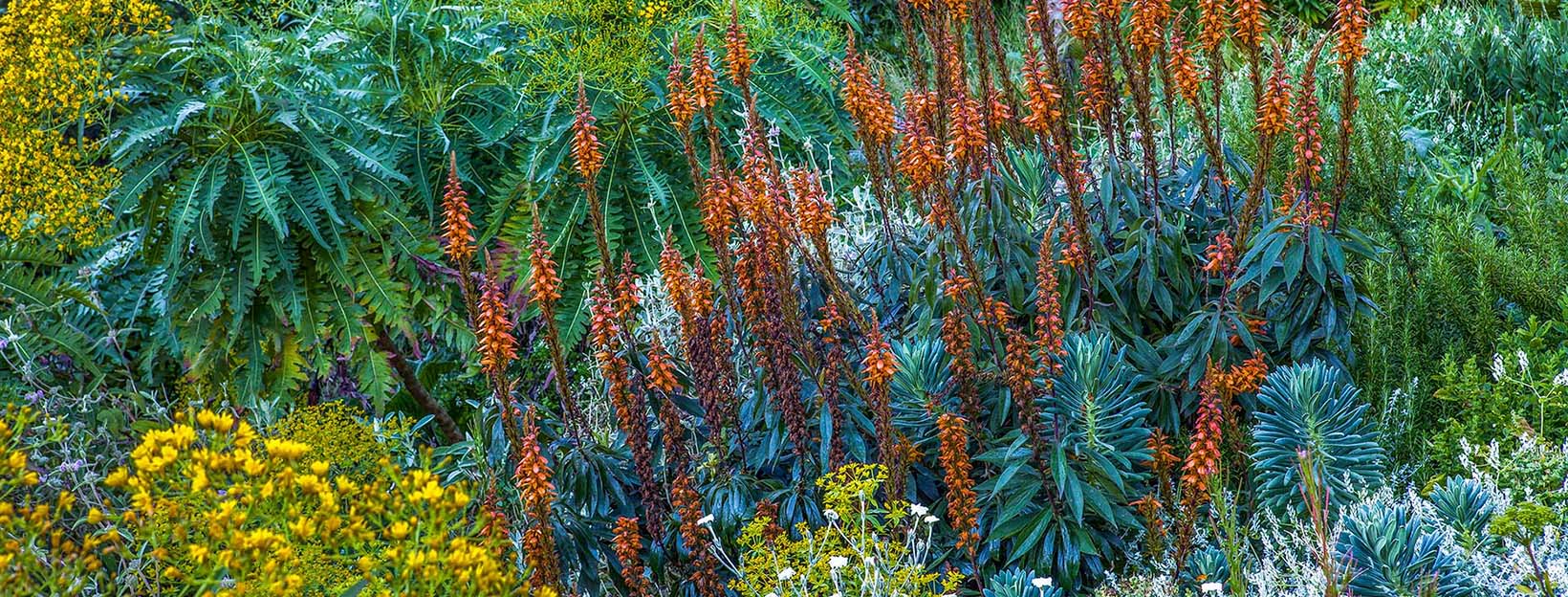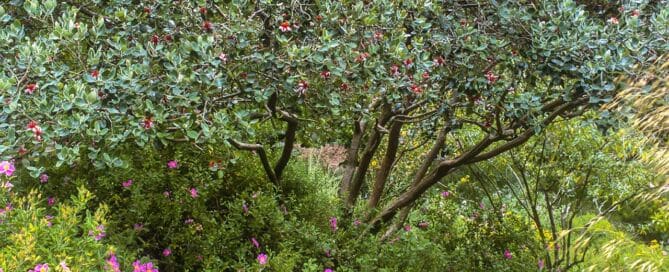
Isoplexis canariensis Canary Island Foxglove, San Francisco Botanical Garden
Summer-Dry Plants and Gardens
The Summer-Dry Project is an on-going initiative to provide inspiration for gardeners in summer-dry, mediterranean climates with plant descriptions and authentic on-site photos that encourage sustainable garden practices.
We want to change the aesthetic of what gardeners typically see in garden photos, tailored specifically here for summer-dry climates. Beautiful photos of beautiful gardens inspire gardeners to mimic what they see. At Summer-Dry you will find a searchable database of photos, all taken in mature gardens that illustrate how plants grow in real settings. Our blog showcases outstanding, climate adapted plants for this special ecoregion.
We are also helping to update the landscape plant database, WUCOLS, (Water Use Classification of Landscape Species) that guides gardeners and designers to determine water use in compliance with the California Model Efficiency Landscape Ordinance (MWELO), the State mandated ordinance to increase water efficiency standards for new and retrofitted landscapes.
Our new book, Gardening in Summer-Dry Climates (Timber Press, January 2021) completely revises the classic Plants and Landscapes for Summer-Dry Climates by recognizing the entire Pacific West Coast as a summer-dry climate, and expands the plant list with detailed information that helps gardeners each region choose plants that will work with their own local version of a summer-dry climate.
Stay in touch on our Blog, Instagram @summerdry.gardens, and sign up for our newsletter.
Please refer to our About page for links and send us your suggestions on other resources.
Latest Articles
Pineapple Guava
Pineapple guava may hold the record for the longest lasting resistance to a plant name change, a resistance recently rewarded with a reinstatement of the original name of Feijoa sellowiana. This evergreen, subtropical South American shrub or small tree was given that name in 1859, renamed Acca sellowiana in


